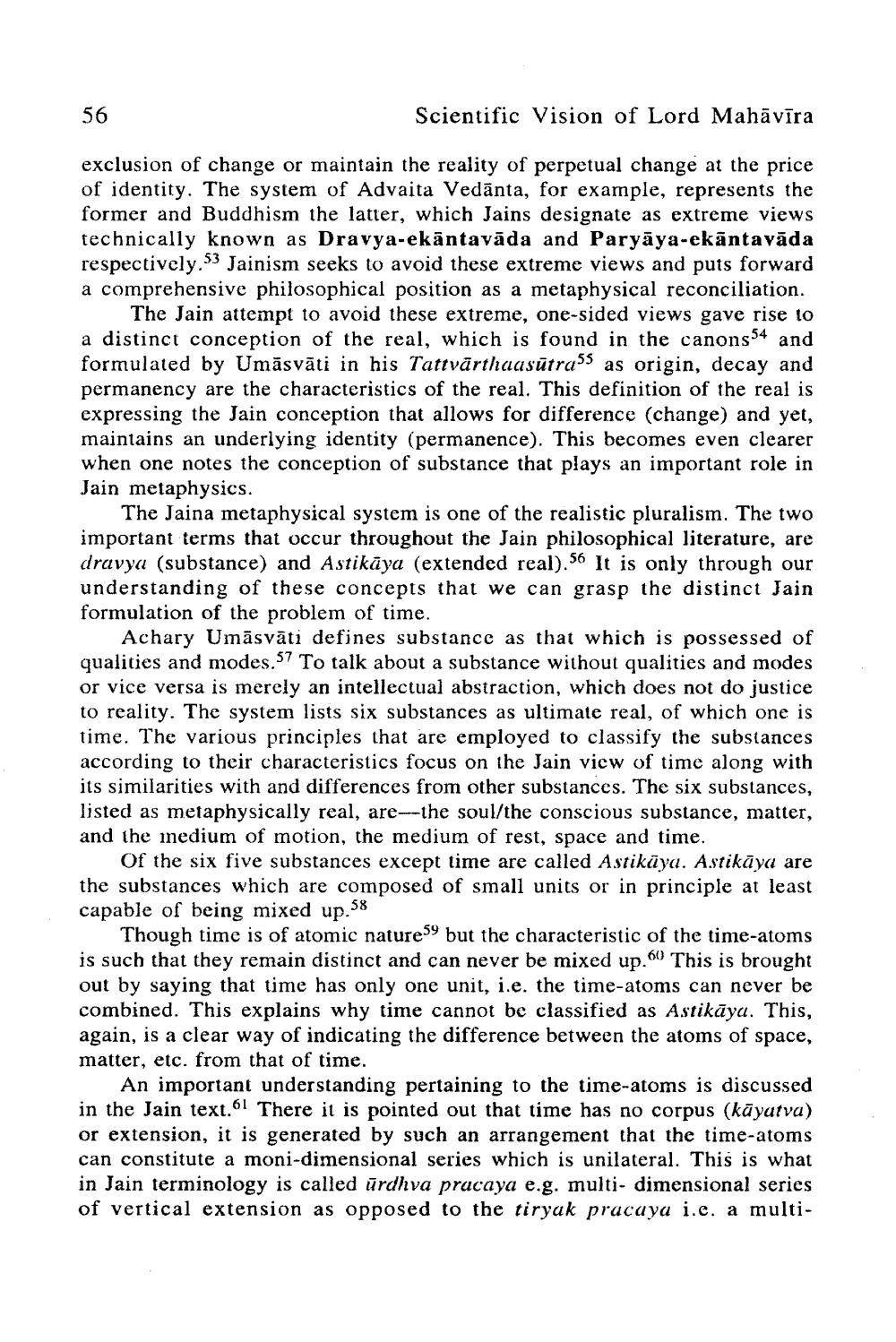________________
56
Scientific Vision of Lord Mahāvīra
exclusion of change or maintain the reality of perpetual change at the price of identity. The system of Advaita Vedānta, for example, represents the former and Buddhism the latter, which Jains designate as extreme views technically known as Dravya-ekāntavāda and Paryāya-ekāntavāda respectively.53 Jainism seeks to avoid these extreme views and puts forward a comprehensive philosophical position as a metaphysical reconciliation.
The Jain attempt to avoid these extreme, one-sided views gave rise to a distinct conception of the real, which is found in the canons 54 and formulated by Umāsvāti in his Tattvārthaasūtrass as origin, decay and permanency are the characteristics of the real. This definition of the real is expressing the Jain conception that allows for difference (change) and yet, maintains an underlying identity (permanence). This becomes even clearer when one notes the conception of substance that plays an important role in Jain metaphysics.
The Jaina metaphysical system is one of the realistic pluralism. The two important terms that occur throughout the Jain philosophical literature, are dravya (substance) and Astikāya (extended real).56 It is only through our understanding of these concepts that we can grasp the distinct Jain formulation of the problem of time.
Achary Umāsvāti defines substance as that which is possessed of qualities and modes.57 To talk about a substance without qualities and modes or vice versa is merely an intellectual abstraction, which does not do justice to reality. The system lists six substances as ultimate real, of which one is time. The various principles that are employed to classify the substances according to their characteristics focus on the Jain vicw of time along with its similarities with and differences from other substances. The six substances, listed as metaphysically real, are--the soul/the conscious substance, matter, and the medium of motion, the medium of rest, space and time.
Of the six five substances except time are called Astikāya. Astikāya are the substances which are composed of small units or in principle at least capable of being mixed up.58
Though time is of atomic natureS9 but the characteristic of the time-atoms is such that they remain distinct and can never be mixed up.60 This is brought out by saying that time has only one unit, i.e. the time-atoms can never be combined. This explains why time cannot be classified as Astikāya. This, again, is a clear way of indicating the difference between the atoms of space, matter, etc. from that of time.
An important understanding pertaining to the time-atoms is discussed in the Jain text.61 There it is pointed out that time has no corpus (kāyatva) or extension, it is generated by such an arrangement that the time-atoms can constitute a moni-dimensional series which is unilateral. This is what in Jain terminology is called urdhva pracaya e.g. multi-dimensional series of vertical extension as opposed to the tiryak pracuya i.e. a multi




